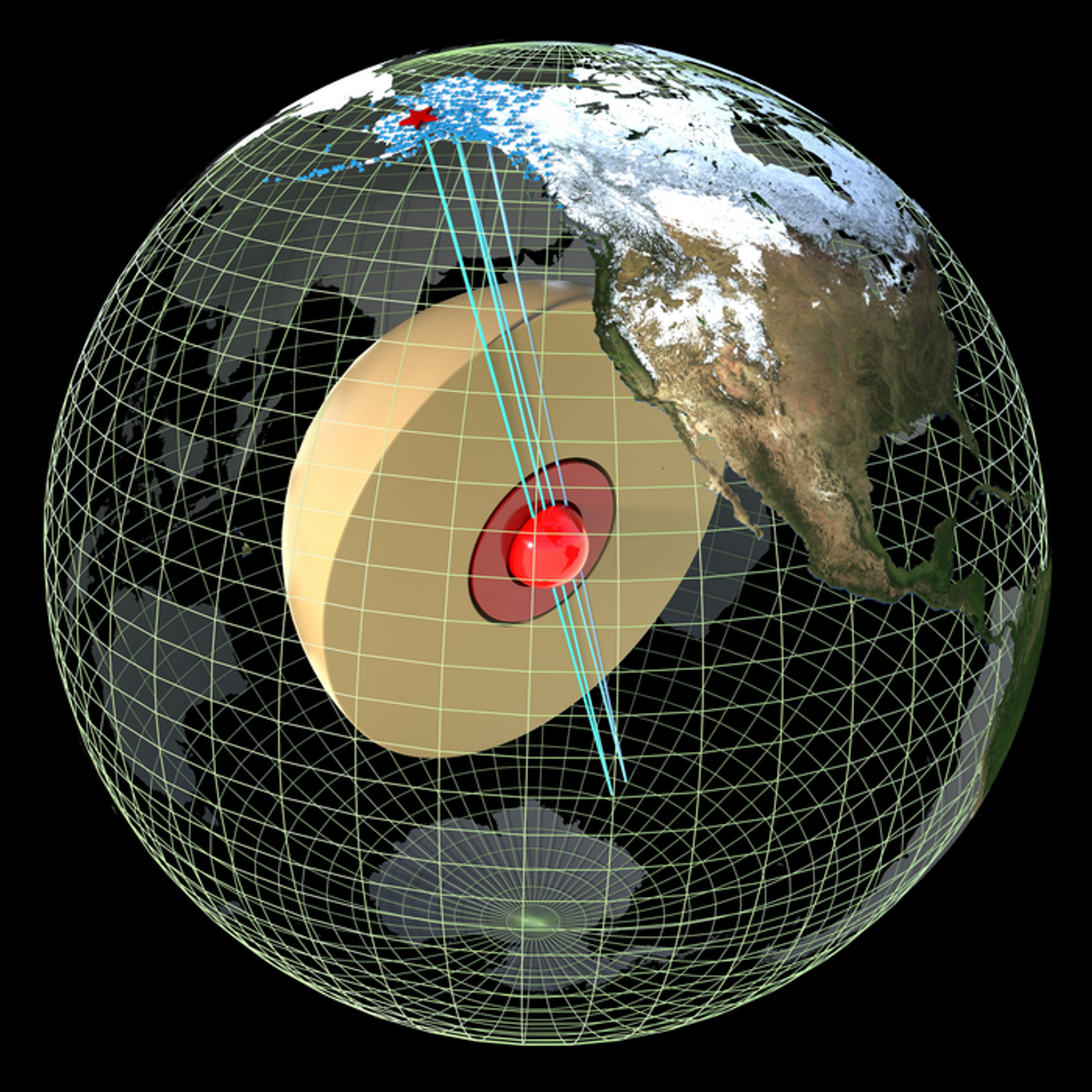Earth's Inner Core Gets New Layer from Seismic Waves Discovery
An earthquake originating from Alaska caused seismic waves to penetrate the innermost inner core of the Earth. (Credit: Drew Whitehouse, Son Phạm and Hrvoje Tkalčic)
Planet Earth is a marvelous geological machine responsible for life to exist here. It is a machine that churns and spews out pieces of itself as it recycles old material into new resources while replenishing both the landscape and atmosphere so life can continue to thrive. Due to gravity and pressure, the Earth is known as differentiated, meaning its interior is divided into sections, which include the crust, mantle, and core.
The core is split into the outer and inner core, and this is where a team of researchers from The Australian National University (ANU) examined seismic wave data from 200 magnitude-6 and above earthquakes over the last 10 years to identify a new layer within the Earth’s inner core known as the innermost inner core, which they’re referring to as a “metallic ball” within the center of the inner core itself. This study holds the potential to help scientists better understand planetary formation and evolution, specifically pertaining to past geologic events.
“The existence of an internal metallic ball within the inner core, the innermost inner core, was hypothesized about 20 years ago. We now provide another line of evidence to prove the hypothesis,” said Dr Thanh-Son Phạm, who is a postdoctoral fellow from the ANU Research School of Earth Sciences, and lead author of the study.
Dr. Hrvoje Tkalčić, who is a professor at ANU, said studying the Earth’s inner core can provide greater details about the history and evolution of our planet.
“This inner core is like a time capsule of Earth's evolutionary history – it’s a fossilized record that serves as a gateway into the events of our planet’s past,” said Dr. Tkalčić. “Events that happened on Earth hundreds of millions to billions of years ago.”
For the study, the researchers analyzed seismic wave data from earthquakes that traverse the interior of the Earth, get “spit out” on the opposite side of the planet, called the antipode, then return to the earthquake’s source.
The researchers used the bouncing back and forth of a ping pong ball as an analogy for how seismic waves function.
“By developing a technique to boost the signals recorded by densely populated seismograph networks, we observed, for the first time, seismic waves that bounce back-and-forth up to five times along the Earth’s diameter,” said Dr Phạm. “Previous studies have documented only a single antipodal bounce. The findings are exciting because they provide a new way to probe the Earth’s inner core and its centermost region.”
But one such set of earthquake seismic waves that started in Alaska caught their attention. For this quake, the waves traveled from Alaska and then “bounced off” a location in the south Atlantic Ocean, then returned to Alaska. They also discovered the waves repeatedly contacted locations near the Earth’s center from a variety of angles. Finding all of this rather peculiar, the research team investigated further.
After examining the known composition of the inner core and the travel times of the waves, they deduced the crystalline structure of the inner core’s innermost layer varies from the outer layer. They said this could explain why the wave speed would vary based on the entry angle.
The study’s results suggest a major global event occurred at some point in Earth’s past that resulted in a “significant” change in the crystal structure or texture of the planet’s inner core.
“There are still many unanswered questions about the Earth’s innermost inner core, which could hold the secrets to piecing together the mystery of our planet’s formation,” said Dr. Tkalčić.
Going forward, scientists will continue to study the Earth’s interior to help us better understand its workings and how it keeps life on our planet thriving.
Sources: ER Services, Nature Communications, EurekAlert!
As always, keep doing science & keep looking up!









